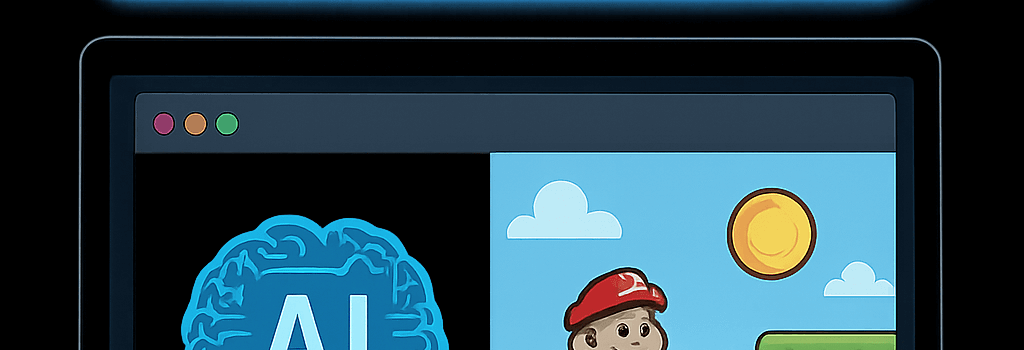Anthropic Revives Flash Games with AI-Powered Web Apps

Quick Take: Anthropic’s latest update transforms its Artifacts system into a browser-based “AI arcade,” where users employ natural language prompts to generate interactive web apps. Drawing on Flash-era nostalgia, the feature showcases advanced code generation via the new window.claude.complete() API, sandboxed execution, and deep integration with Claude 3 Sonnet.
The Prompt Arcade Reimagined
On Wednesday, Anthropic announced a major enhancement to its Artifacts document management platform: a personal AI app gallery that channels the spirit of early-2000s Flash game portals. Unlike legacy Flash with its ActionScript VM and proprietary plugin, these new apps run entirely on modern HTML5, CSS3, and JavaScript—typically powered by React 18—directly within Claude’s chatbot interface.
How It Works: AI as the Full-Stack Developer
When a user submits a request like “Build me a 2D physics sandbox where I can drop colored balls and measure collisions,” Claude 3 Sonnet (the latest code-specialized model variant) generates:
- HTML boilerplate structured with semantic
andtags - CSS modules scoped via
CSS-in-JS(Emotion or styled-components) for styling - JavaScript logic using React hooks (
useState,useEffect) and a physics engine likematter.js - Integration of
window.claude.complete()calls to enable conversational NPCs or dynamic tutors within the app
Anthropic’s demo illustrates a 3D first-person “Anthropic office simulator” built in under two minutes: walk around, click on employees, and chat with them—each conversation is a fresh API call to Claude, seamlessly intertwined with the UI logic.
Artifact Gallery: A Modern-Day Flash Portal
The gallery interface organizes artifacts into categories like Learn Something, Life Hacks, and Be Creative. Each tile shows a screenshot and brief description—eerily reminiscent of Newgrounds and Miniclip thumbnails from the Flash golden age.
- Bedtime story generator with branching narratives
- Molecule visualizer leveraging WebGL
- Interactive writing editor with real-time grammar coaching
- “Touch Grass” mindfulness app combining ambient audio with guided meditation
All apps run in an isolated JavaScript sandbox—no external network requests, databases, or localStorage access—ensuring security and predictability. State is managed in-memory via React’s VDOM, and each artifact consumes tokens against the user’s Claude plan (Free, Pro, or Max).
Technical Deep Dive: Sandbox, APIs, and Limits
Under the hood, Anthropic uses an iframe-based sandbox similar to Trusted Types enforcement. Key technical specs include:
- JavaScript heap capped at ~12 MB to prevent runaway scripts
- Iframe CSP headers disallowing
script-src 'unsafe-eval'andconnect-srcbeyond Claude endpoints - Built-in bundler that transforms JSX and CSS modules in-browser via
esbuild-wasm window.claude.complete()invokes Claude’s REST API (v2.3) with a 30-second processing timeout
“This approach lets users focus on creative prompts rather than plumbing,” says Dr. Sara Kapoor, CTO at CodeSandbox. “It’s a compelling model for low-code AI development.”
Performance and Scalability
Alpha testers report sub-500 ms cold-start times for simple React apps and append-only state workflows. Claude’s distributed inference cluster in us-west-2 and eu-west-1 leverages NVIDIA H100 GPUs and TronNet custom inference chips, ensuring consistent performance at scale. Anthropic is also experimenting with WebAssembly runtimes to push interactive frame rates beyond 60 FPS for WebGL-based artifacts.
Security and Compliance Considerations
Anthropic’s zero-trust design means artifacts cannot exfiltrate user data. All conversation logs and code snippets remain encrypted at rest with AES-256-GCM. Planned future enhancements include OAuth integration for enterprise SSO and SOC 2 Type II attestation for regulated industries.
Expert Perspectives and Industry Impact
Analysts at Gartner forecast that AI-driven low-code/no-code platforms will account for 65% of application development by 2027. “Anthropic’s Artifacts is a strong proof-of-concept for generative AI in rapid prototyping,” notes Tom Richards, VP at Forrester Research. Meanwhile, competitors like OpenAI are rumored to be testing similar chat-to-UI pipelines in ChatGPT Enterprise.
Future Directions
- External API support: Anthropic has hinted at unlocking third-party REST and GraphQL endpoints, enabling CRM integration or IoT device control.
- Persistent storage: A mini database layer with row-level encryption could allow stateful apps like quizzes or surveys.
- Community gallery: Opening public artifacts for browsing and rating, akin to Scratch’s open-source ethos.
Conclusion
By blending AI code generation with a nostalgic Flash-style gallery, Anthropic is forging a new paradigm for browser-based creativity. While still in beta and requiring iterative prompt refinement, Claude Artifacts offers a glimpse of how anyone—not just professional developers—might build, share, and monetize interactive AI-enhanced experiences in the near future.